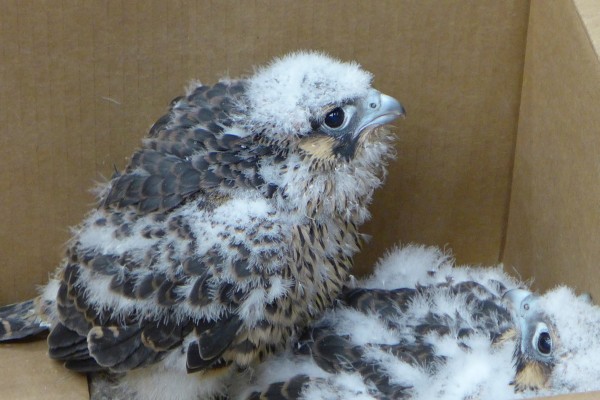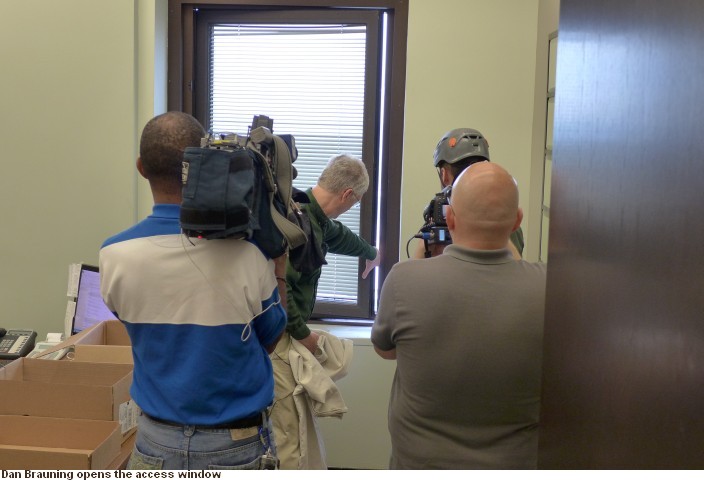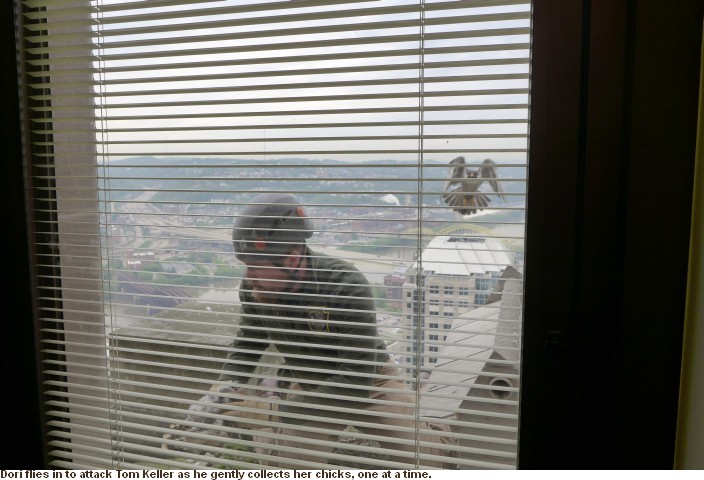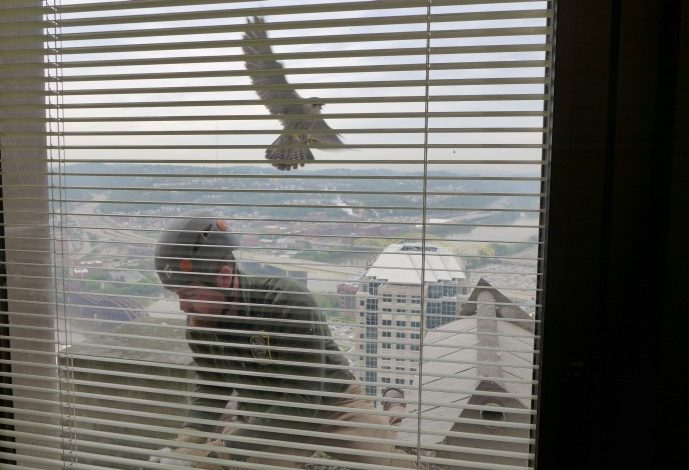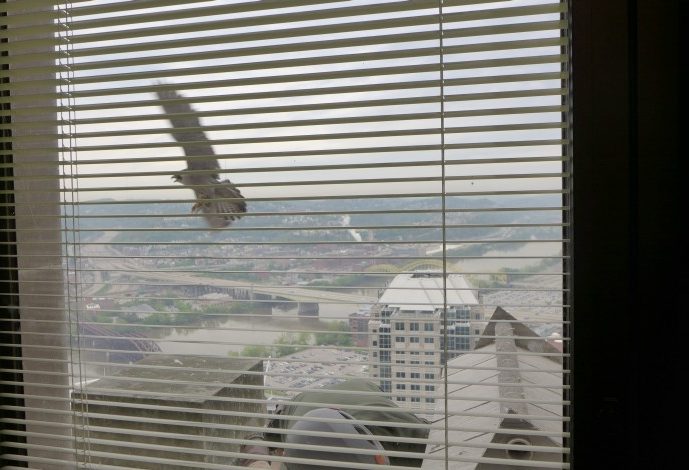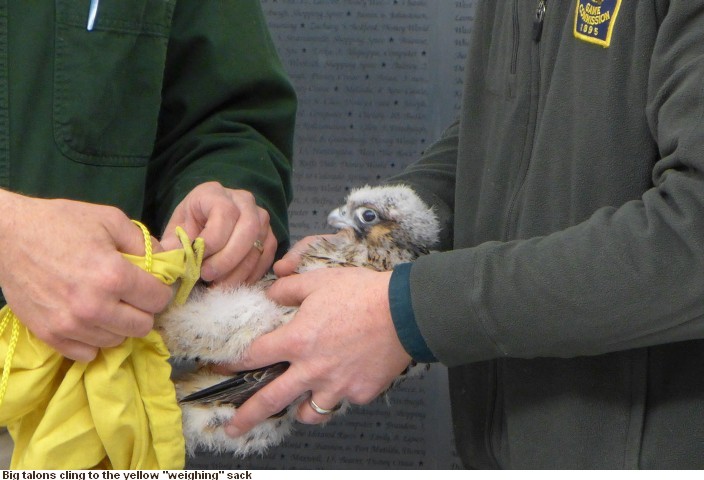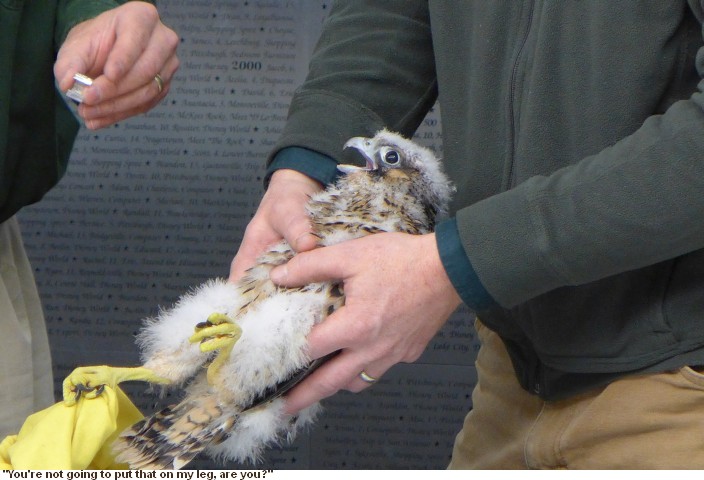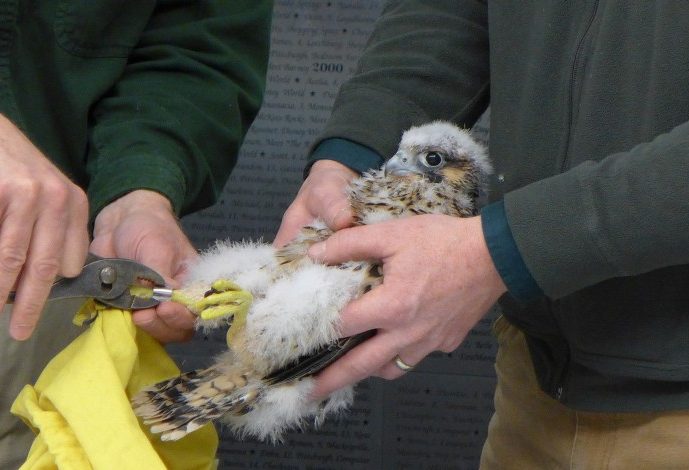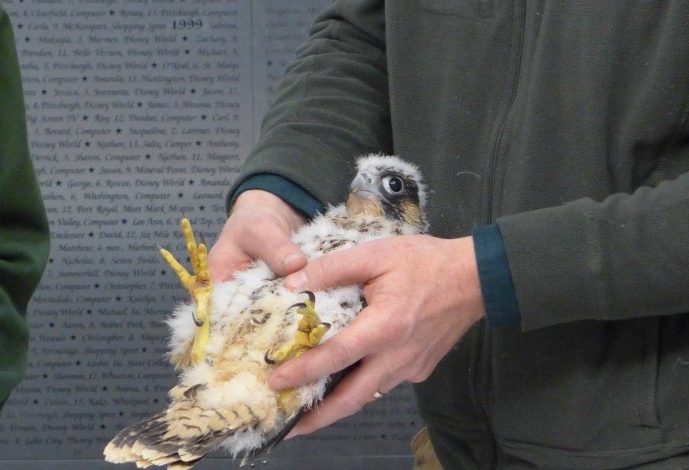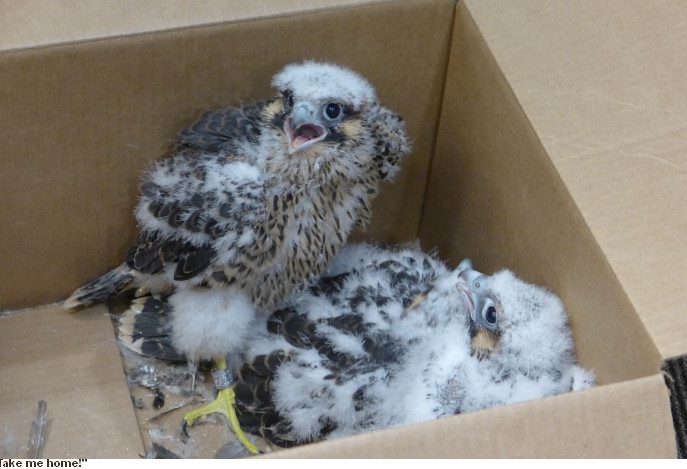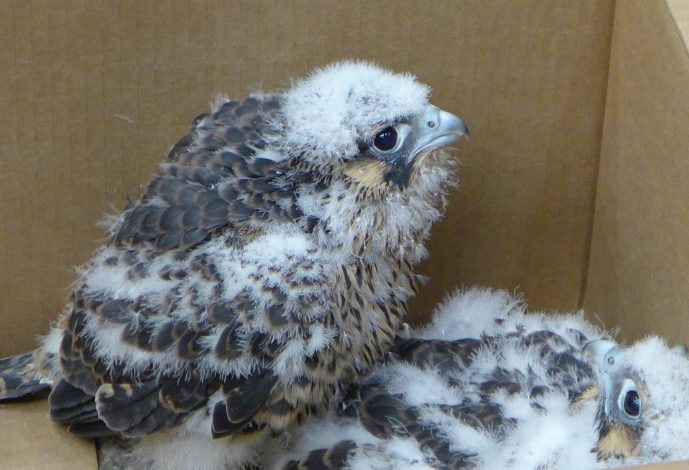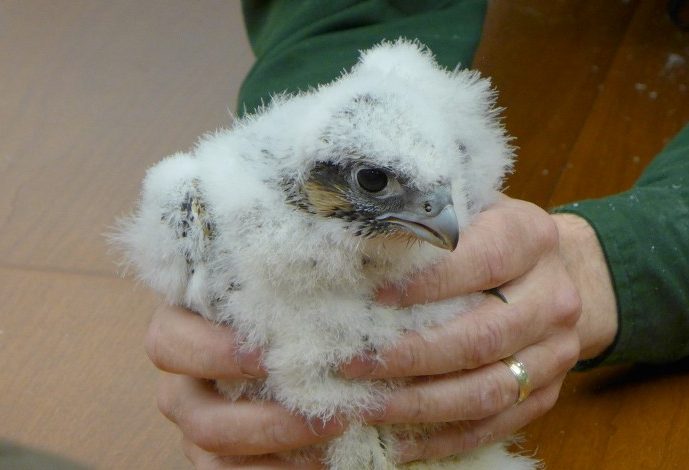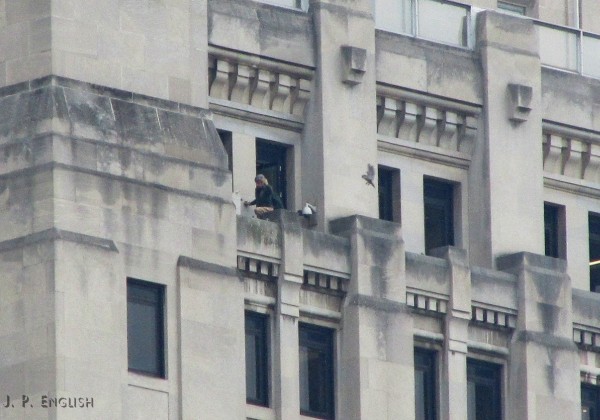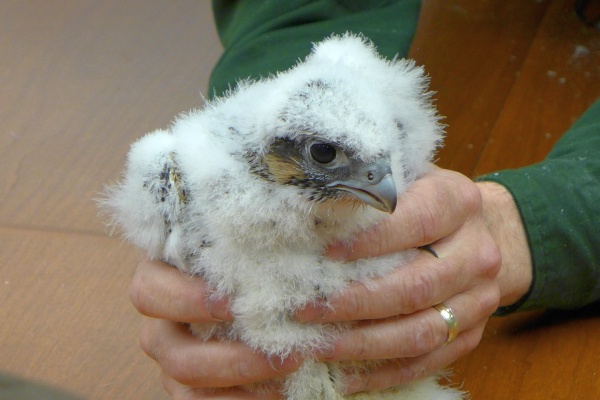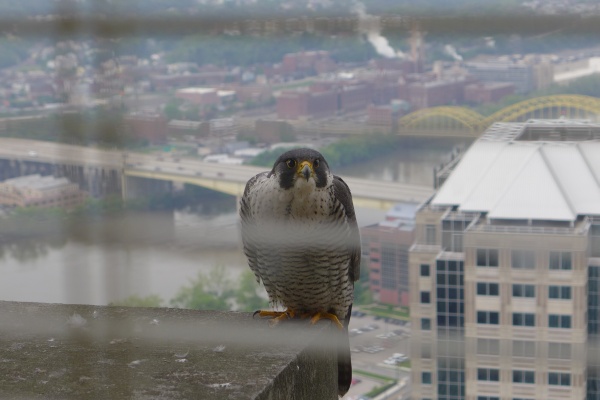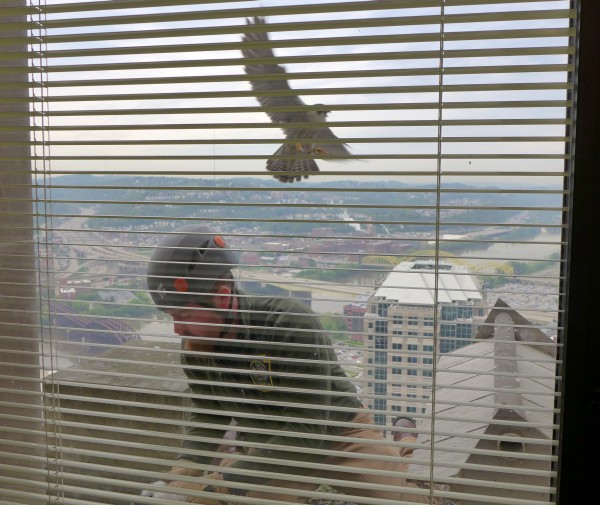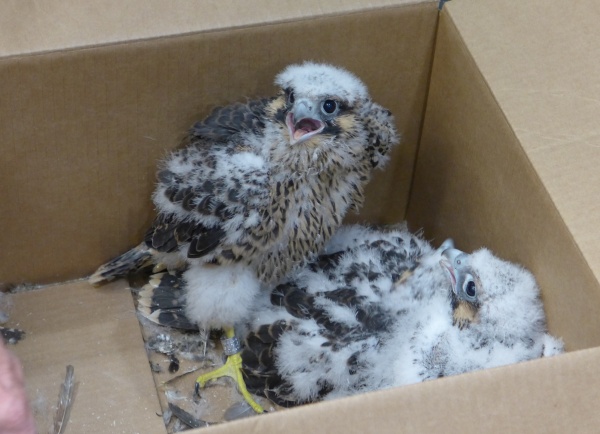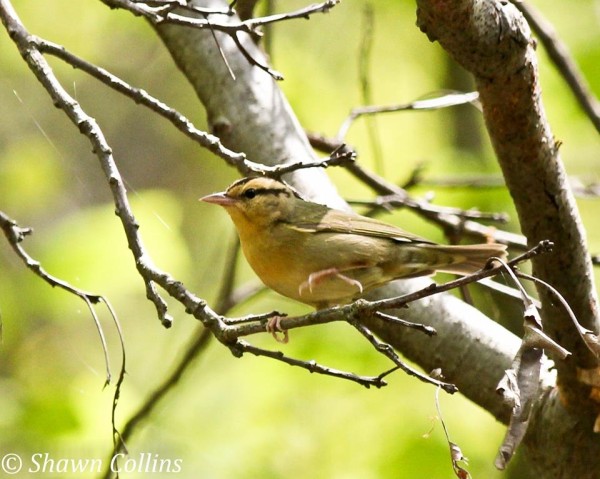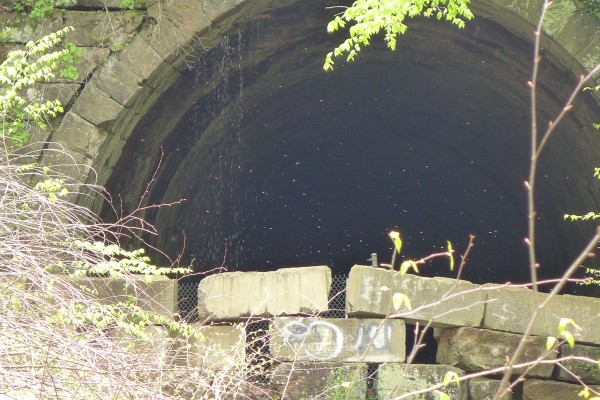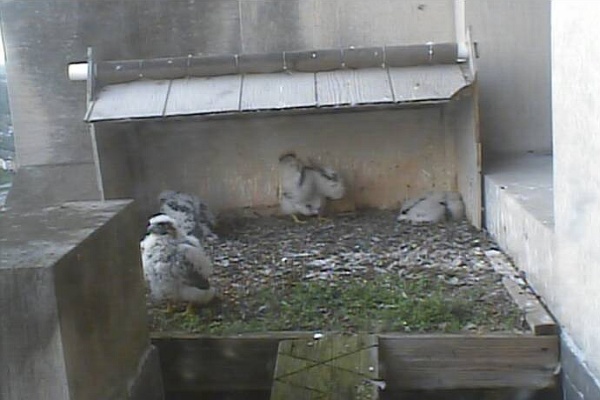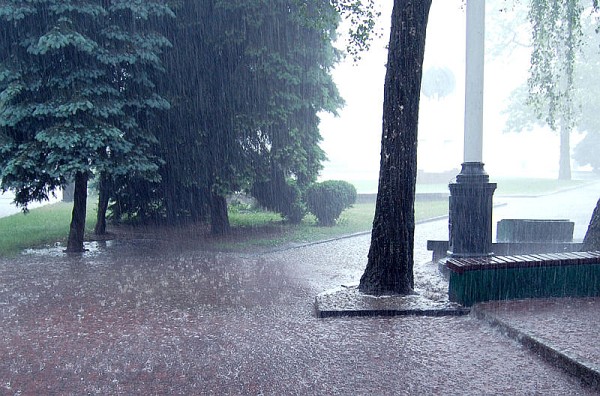
Monaca East Rochester Bridge:
With thunderstorms predicted yesterday (they never happened) the peregrine bandings at Tarentum and McKees Rocks Bridges were postponed. Instead, the PA Game Commission’s Dan Brauning and Tom Keller went to the Ohio River in Beaver County to the Monaca East Rochester Bridge pictured above.
Last year this peregrine pair nested on the huge inaccessible Monaca-to-Beaver railroad bridge. No one could tell if the nest was successful. This year they appeared to have come home so Dan and Tom investigated. Dan wrote on May 21:
Tom Keller, I, and a team from PennDOT accessed the bridge this morning, and found 4 healthy chicks, 1 male and 3 females. The birds are about 18 days old today.
The adult female is an extraordinarily aggressive bird, hitting every one of us during our visit under the bridge. She is the same female as was previously observed there — 75/Y, from Harrisburg. If you know Tom, ask him about his new scar. The male never came close.
Local observers that could be on the lookout for fledging in about 25 days would be appreciated. The nest is far out over water, about 3 bays out from the pier on the Monaca side of the river. The young should be able to get onto the catwalk, and therefore have good prospects for developing strongly before fledging.
Here’s a photo of this amazingly aggressive mother peregrine, 75/Y, taken on banding day in 2012 by Game Commission WCO Steve Leiendecker before she attacked him. She never gives up.
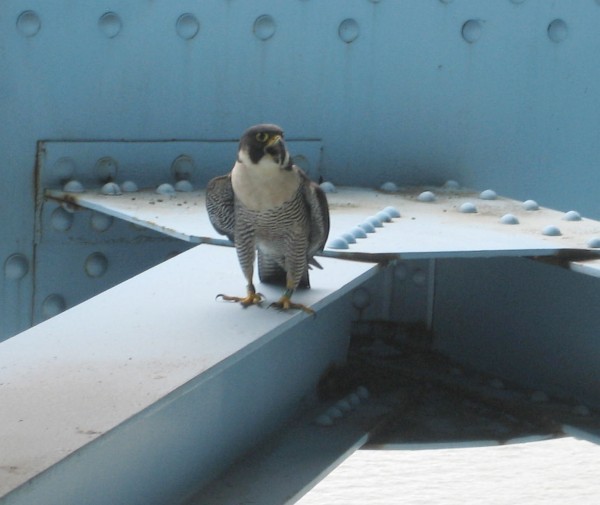
If you’re in the Monaca area, start monitoring this bridge on June 11 for fledging activity (that’s four days ahead of “25 days”).
Westinghouse Bridge:

Tuesday afternoon, after the Gulf Tower banding, Dan and Tom went to the Westinghouse Bridge where a peregrine pair has been active for several years.
Using the bucket truck they looked for signs of a nest under the bridge while John English took photos from below.
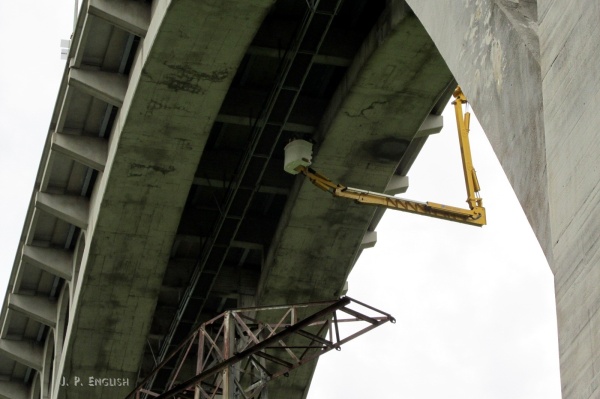
The male was present but no female came out to “kak” and attack.
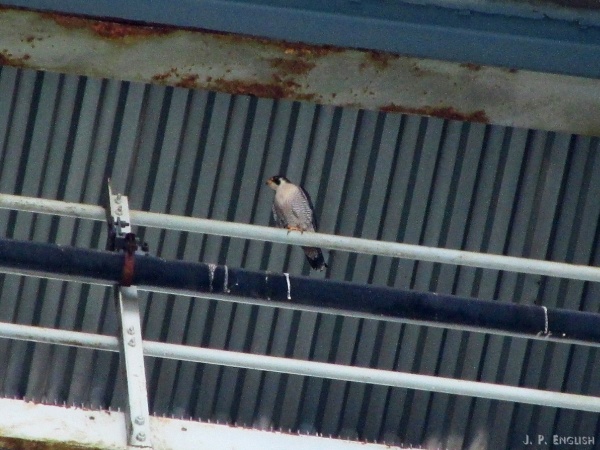
Surprisingly, she was still incubating three eggs. This is a late nest, perhaps a renesting after a territorial fight between males. The female is still Hecla (68/H) from Ohio’s Ironton-Russleton Bridge 2009, resident since 2012.
If you’re in the vicinity of East Pittsburgh/North Versailles, please check under this bridge for peregrine activity. There’s no way we’ll know if the nest is successful without some watchful eyes below.
(Monaca photos from May 2012 by WCO Steve Leiendecker, PA Game Commission. Westinghouse photos by John English)
 Come One, Come All! Mt. Washington Community Development Corporation and the Western Pennsylvania Conservancy are teaming up on Friday and Saturday June 6-7 for a BioBlitz in Pittsburgh’s newest regional park: Emerald View.
Come One, Come All! Mt. Washington Community Development Corporation and the Western Pennsylvania Conservancy are teaming up on Friday and Saturday June 6-7 for a BioBlitz in Pittsburgh’s newest regional park: Emerald View.

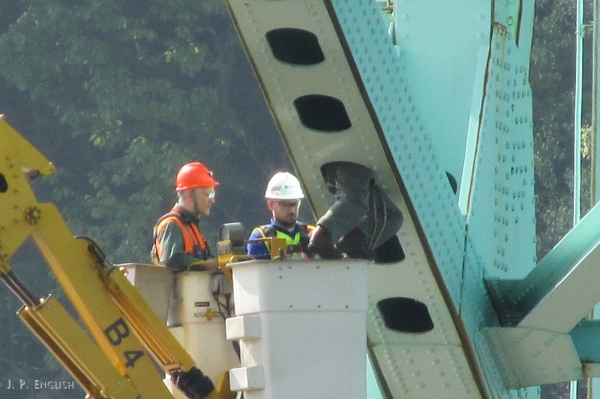



 I don’t know about you but without a successful nest at Pitt this spring I’m starved for a Fledge Watch at Schenley Plaza. It’s always been a great time to get together and indulge our passion for peregrines.
I don’t know about you but without a successful nest at Pitt this spring I’m starved for a Fledge Watch at Schenley Plaza. It’s always been a great time to get together and indulge our passion for peregrines.




